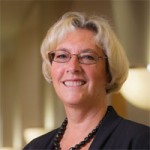This article is more than 5 years old.
The second pair of presentations I attended was on the theme of designing learning spaces in libraries. I was reminded that I wrote a paper on this topic ages ago (late 90’s) when we were building the Undergraduate Library at Wayne. Many of the principles are the same, but the importance of technology is even greater than it was back then.
“Designing Self-Service Learning Environments” by Wendy Starkweather of UNLV emphasized the following timeless principles:
- Self-service (for convenience, speed, choice and control)
- Flexibility (perhaps the single most key component in modern design)
- Stimulating spaces (the wow factor)
- Foster both community and contemplation (need both quiet and non-quiet spaces)
- Provide healthful, ergonomic environment (but what they really want is soft seating)
- Service policies that support design principles (give them what they want)
Starkweather reminded us that the life cycle of buildings is much longer than the life cycle of policies or technologies so designing an adaptable structure and infrastructure is key. Being a classics major, I loved the way she summed up the presentation, which she “borrowed” from another university: tuum est, meaning “it is yours.”
“Effective Practices for Technology-Enhanced Spatial Transformations” was a panel presentation by three librarians from the University of Southern California. Projects were described at the Von KleinSmid Applied Social Sciences Library, the Science and Engineering Library, and the Leavey Undergraduate Library. Themes were similar to the previous presentation: the need for flexible space, growing importance of multimedia, the library as a community gathering space for the campus, the need for both quiet, individual spaces and non-quiet group spaces. The Leavey Library designed a podcasting studio that might bear further investigation. One line I loved from one of the speakers was when she introduced herself with the title of Team Leader – “which now sounds so 90’s!”
Lynn
